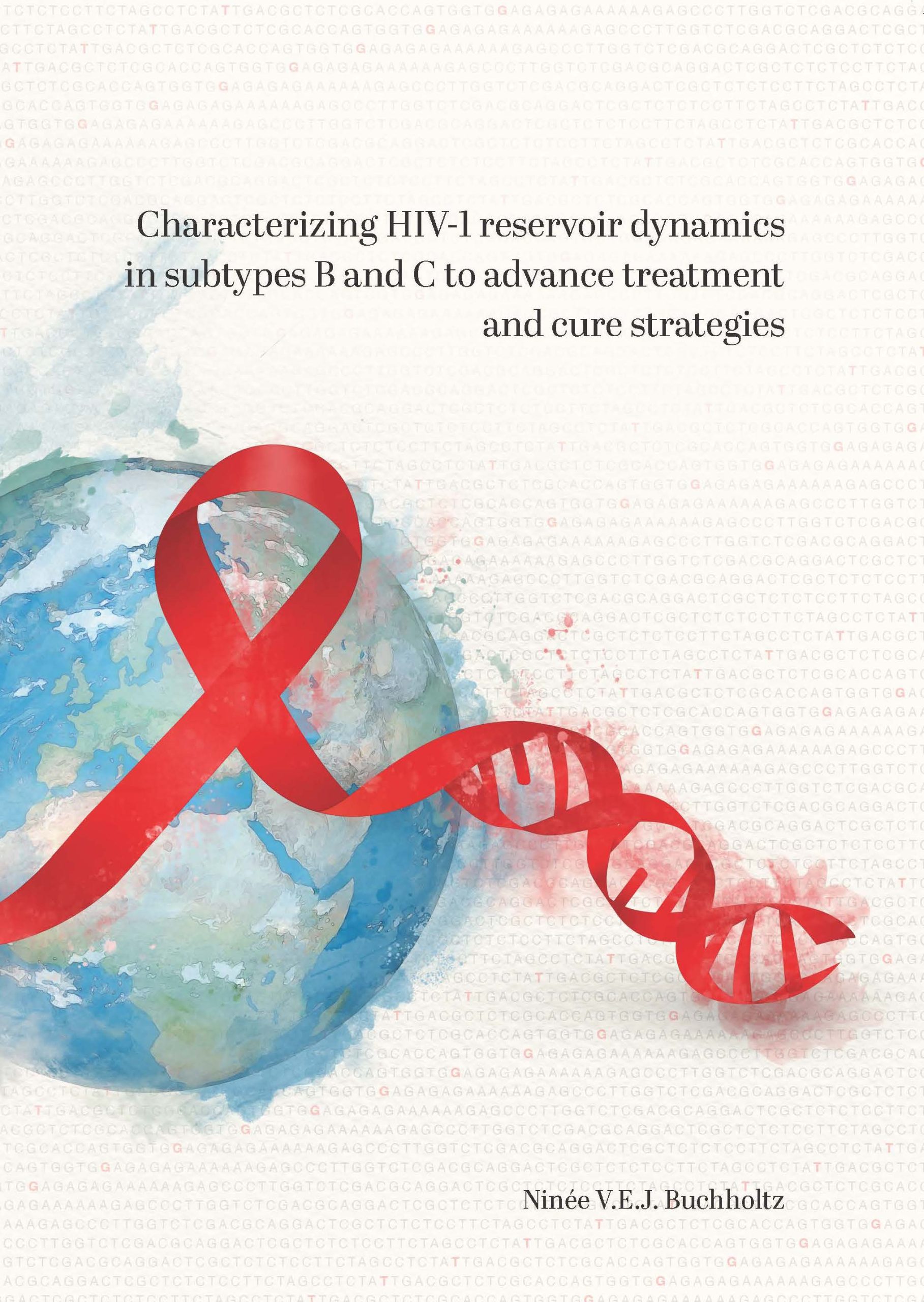Research at UMC Utrecht by PhD candidate Ninée Buchholtz provides valuable insights into HIV-1 reservoir dynamics, and explores strategies for reactivating latent viruses to develop effective cures. In particular, reactivating latent viruses with help of latency reversal agents holds promise since it may allow the immune system to recognize and eliminate cells infected by HIV-1.
Human immunodeficiency virus 1 (HIV-1) continues to be a major global health issue. In 2022, approximately 39 million people were living with HIV-1, with 1.3 million new diagnoses and 630,000 deaths from AIDS-related illnesses. Despite the success of combination antiretroviral therapy (ART) since its introduction in 1996, which has significantly reduced HIV-1-related deaths and illnesses, ART cannot cure the infection. The main challenge in curing HIV-1 lies in the viral reservoirs. These reservoirs form when HIV integrates its DNA into the host’s genome, where it can remain silent as a latent viral infection. This latent reservoir allows HIV-1 to persist despite ART, and hide from the immune system, making it difficult to eradicate. The reservoirs, primarily found in CD4+ T cells, but also in other cell types and tissues, can survive for years. They consist of two types: intact viruses capable of infecting new cells, and defective viruses with deletions and/or hypermutations. Understanding and accurately measuring these reservoirs is key to developing strategies that could eventually eliminate them.
HIV-1 subtype B, common in high-income countries, accounts for only 12 percent of infections worldwide. In contrast, subtype C, the most widespread variant, represents about 47 percent of all infections, particularly dominating in Sub-Saharan Africa. In her PhD research, Ninée Buchholtz (Department of medical Microbiology, UMC Utrecht) further characterized HIV-1 reservoir dynamics in subtypes B and C to advance treatment and cure strategies.
Ninée Buchholtz and co-workers enhanced the applicability of a specific HIV-1 quantification technique, the intact proviral DNA assay, by adapting it to accurately differentiate between intact and defective proviral reservoirs in both HIV-1 subtypes B and C. Using this quantification technique, the investigators discovered that defective proviruses correlate with markers of reservoir activity and immune regulation. Moreover, they found that defective proviruses are linked to ongoing viral production, contributing to persistent viremia. These findings highlight the significant impact of defective proviruses and emphasize the need to eliminate the defective reservoir to halt HIV-1 associated disease progression.
“My thesis provides valuable insights into HIV-1 reservoir dynamics, focusing on global inclusivity by considering the most prevalent subtypes, and explores strategies for reactivating latent viruses to develop effective cures.”
Additionally, Buchholtz investigated strategies to target HIV-1 reservoirs by reversing proviral latency as part of potential cure approaches. One approach that she discussed in detail, also in relation to the central nervous system, is the “induce and reduce” strategy. This method aims to reactivate latent viruses using latency reversal agents (LRAs), allowing the immune system to recognize and eliminate the infected cells. These findings highlight the potential of panobinostat as a promising LRA for this purpose.
Ninéé Buchholtz summarized her findings as follows: “My thesis provides valuable insights into HIV-1 reservoir dynamics, focusing on global inclusivity by considering the most prevalent subtypes, and explores strategies for reactivating latent viruses to develop effective cures.”
Ninée Buchholtz, MSc (1994, Heerlen) defended her PhD thesis on November 28, 2024 at Utrecht University. The title of her thesis was “Characterizing HIV-1 reservoir dynamics in subtypes B and C to advance treatment and cure strategies”. Supervisors were prof. Anne Wensing, MD, PhD and em. prof. Emmanuel Wiertz, PhD (both Department of Medical Microbiology, UMC Utrecht). Co-supervisors were Monique Nijhuis, PhD and Jori Symons, PhD (both Department of Medical Microbiology, UMC Utrecht).

